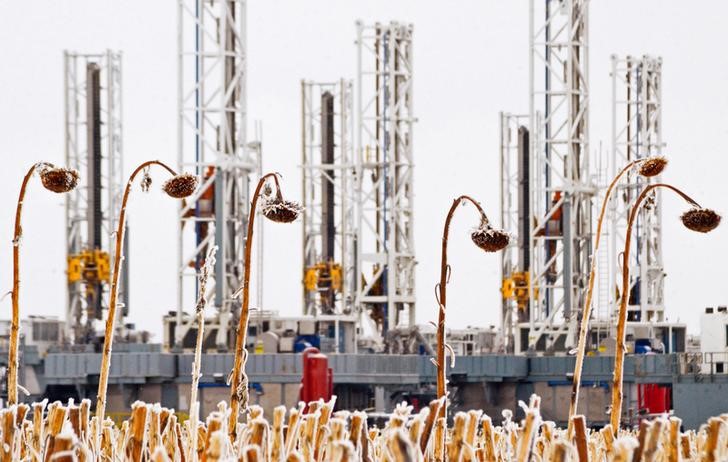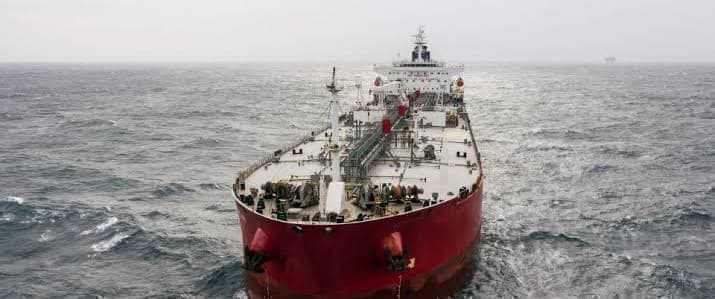Green energy’s $10tn revolution faces oil crash test

In 2014, when the price of oil last crashed, the world’s governments had no agreement in place to fight climate change. The following year leaders signed the Paris accord. Green investments have soared since then. Some $1.2tn has been poured into renewable energy, and global electric vehicle sales reached 2mn last year. Bloomberg NEF expects as much as $10tn poured into clean energy by 2050. The accord also marked a cultural watershed, with emissions targets now policed by a growing environment movement that’s shaping politics from Germany to India. In a sign of the times, activist Greta Thunberg and Tesla Inc founder Elon Musk are now two of the most famous people in the world. So when this week Saudi Arabia and Russia joined in a price war that wreaked havoc on global markets already rattled by the coronavirus, it looked like the major oil-producing nations reasserting their supremacy in the short term. Instead, it may prove to be another step in a longer-term trend towards ending oil’s power to hold the world to ransom. The price of a barrel of oil remains an important economic indicator. But the relentless push to move away from fossil fuels suggests that its geopolitical impact is likely to be softer than in the past, with the imperative to combat global warming assuming its place. “The impact of the oil price on broader economic growth has been decoupling ever since the 1980s,” said Shane Tomlinson, deputy chief executive officer at environmental think tank E3G. “We could see exceptional movements in the oil price in the next few months, but I don’t think that changes the fundamental need to address climate change.” Oil’s fall to some $35 a barrel from $55 just last week has major implications for addressing climate change. Low prices incentivise more use of oil; it squeezes the budgets of oil companies, putting clean-energy projects in doubt; and some governments feel pressured to prop up struggling oil companies. All that drives up emissions, which is bad news for global warming. However, if low prices are sustained this time, there might be big positives for fighting climate change. Renewable energy is a more mature industry than five years ago. As it becomes a less risky investment, it has attracted big investors who are showering a lot of cash and building some projects that rival the capacity of conventional power plants. At the same time, oil exploration is becoming less viable economically, with an increased risk that even those projects that go ahead no longer yield good returns and with worries about stranded assets growing. “Now it doesn’t make sense to reduce your investment in renewables if the oil price crashes,” said Mark Lewis, head of sustainability at BNP Paribas Asset Management. “It’s more logical to reduce your investment in oil.” That reality points to a broader change in investor sentiment since Paris that aff ects companies and governments alike. A number of large investors have come together under groups such as Climate Action 100+ to demand companies put sustainability at the heart of their business models, and that isn’t likely to change. Tesla has eff ectively become a proxy for how the green economy is viewed by investors. Musk has demonstrated that a mass-market electric car is viable, prompting all the major carmakers to follow his lead. He’s building his latest plant outside Berlin, in a show of his intention to take the fight to the heart of Europe’s leading luxury car producer. Tesla is after all the world’s second-most valuable carmaker by market value after Toyota Motor Corporation. For governments worldwide, pressure for policy measures has mounted as the issue increasingly resonates, in part due to the kind of direct action and media campaigning espoused by Greta Thunberg. Low oil prices off er one reason to heed that voter call, since it’s a good time to end fossil-fuel subsidies or to raise taxes on consumption of fossil fuels. Such a move can also help avoid the sorts of destabilising anti-government protests seen in France, Iran and Ecuador when energy-price increases were proposed. It could even be done in a way that “protects or even benefits poorer households and communities,” said Helen Mountford, vice president of climate and economics at the World Resources Institute. The goal of reaching out to “left-behind” communities is a dynamic driving policy from the post-Brexit UK to South Africa and swaths of Latin America that suff ered waves of unrest late last year. During the last down cycle, between 2014 and 2016, when oil briefly dipped below $30 per barrel, India cut annual fossil-fuel subsidies from $29bn to $8bn and even raised taxes on consumption. Some of the money raised was diverted to renewable-energy subsidies, after setting an ambitious goal to deploy as much as 175GW of mainly solar and wind power by 2022 — about twice the power generation capacity of the UK. “Many countries are pursuing electrification and decarbonisation to make them less dependent on the volatility of oil markets,” said Adnan Amin, former director general of the International Renewable Energy Agency. “This kind of event will only reinforce that momentum.” Also since 2014, the power of Opec’s 14 nations to shape the market has been weakened by the impact of US shale production. (Opec’s Vienna base is home to an Austrian government that now includes the Greens as junior coalition partner.) The US — which is not a member of the group — became an oil exporter again on the back of its shale revolution, surpassing Russia and Saudi Arabia in 2018 to regain its status as the world’s biggest producer. President Donald Trump has cheered America’s energy resurgence as an example of taking back control. However, the collapse in oil prices weakens the shale industry’s ability to pump at a profit and even pushes some of the producers toward bankruptcies, adding to economic uncertainty surrounding the virus that may hurt Trump’s re-election bid, says Amin. Since Trump unilaterally pulled the US out of the Paris agreement, it could yet tilt the presidential race in favour of a candidate more in favour of climate action. In Brussels, meanwhile, European Commission President Ursula von der Leyen doubled down on European Union plans to achieve climate neutrality by 2050, despite the emergence of what she called “unforeseen challenges.” “Today it’s no longer the question if there will be a European Green Deal or whether the EU will become climate- neutral but the question is how we’re proceeding and how far-reaching will the transition be,” Von der Leyen said on Monday. That stance is understandable given that EU citizens say they want the bloc to focus on tackling climate change and preserving the environment as its No 1 priority, according to a recent Eurobarometer survey for the European Parliament. “Clearly we cannot ignore what’s going on globally,” said EU Environment Commissioner Virginijus Sinkevicius on Bloomberg TV. The global “climate emergency didn’t go anywhere.”









BRUSSELS – The spread of the COVID-19 coronavirus across Europe and the United States has led to a sharp financial-market correction and prompted calls for active monetary and fiscal policy to prevent a recession. But a closer look suggests that such an approach might not help much at all.
The COVID-19 epidemic is marked by uncertainty. Technically, it does not represent a “black swan” event, because there have been other pandemics before. But it was, until a few months ago, unforeseeable, at least in specific terms. And it will have a long-lasting impact even if its precise evolution cannot be predicted today.
For now, it seems that the virus is moving westward. In China, where the virus emerged, infections are declining after the authorities implemented radical measures – including lockdowns that brought the economy to a standstill for over two weeks. Although it is too early to tell whether the virus has really been contained, economic life now seems to be normalizing gradually, implying that the “China shock” may be unwinding.
In the US and Europe, by contrast, the shock seems to be just beginning, with a fast-growing number of new infections raising the specter of severe economic disruption. This risk is particularly pronounced in the eurozone, which may not be able to weather a severe downturn without spiraling into crisis.
To be sure, the epidemic’s direct fiscal consequences seem manageable. Even Italy, which is currently suffering the most, could increase public spending for virus-containment measures without violating EU fiscal rules.
If these costs spiral – as seems likely, now that a quarter of the country, accounting for most industrial and financial activity, is under lockdown – the European Union should be able to offer support to Italy beyond allowing the government to run a larger deficit. Article 122.2 of the Treaty on the Functioning of the EU allows the European Council to grant financial assistance to a member state facing “severe difficulties” caused by “exceptional occurrences beyond its control.” This procedure should be activated now.
In any case, COVID-19’s trajectory suggests that it will likely spread farther, forcing other EU member states to adopt public-health measures at the expense of economic activity, particularly in important sectors such as travel and tourism. Moreover, supply chains will be impaired, not only by the temporary shutdown of the Chinese export machine, but also by disruptions within Europe. Neither interest-rate cuts nor new government expenditures would do much to offset the short-term effects of such shocks.
The more serious problems are likely to emerge from the financial system. While many firms can slash production quickly, running a business in “disaster recovery mode” still costs money, and debt still comes due. In Europe, where labor costs cannot be cut in the short run, the challenges this raises could be particularly serious.
Fortunately, most EU members have some system in place under which the government covers the wages of workers who become temporarily redundant for reasons outside of their employers’ control. These mechanisms, which would sustain personal incomes during the crisis, are the main reason why a long-lasting drop in consumption is unlikely. Once the virus is contained, European consumers will have little reason not to spend as much as before.
Yet two other possible developments could tip the eurozone into recession. The first is a sharp slowdown of global trade, which the EU has little power to counter. The second is a collapse in investment, which the EU can and should work to prevent.
The last eurozone crisis demonstrated that investment collapses when the financial system stops functioning. In market-based systems, like that of the US, this is a question of risk premia and plain access to credit, which policymakers can hardly influence. For Europe, with its bank-centric financial system, the key to weathering the COVID-19 crisis is thus to keep the banking sector healthy.
For that, a calibrated supervisory response is essential. The shift of banking supervision to the European Central Bank has led to more rigorous and selective credit policies by commercial banks. While this has reduced banking risks, applying tough lending standards at a time of severe economic stress caused by public-health measures could punish otherwise creditworthy firms that are facing temporary losses.
Italy’s government is providing direct financial support to companies directly affected by the lockdowns. But if the crisis spreads, the number of sectors that are affected (often indirectly) will increase. Governments cannot provide financial support to all of them. Banks can do much more, but only if they are willing to overlook bad financials. Supervisors should allow – and even encourage – such an approach.
A forbearance-based approach – together with the “automatic” fiscal stabilizers built into Europe’s social-security systems – would do far more to mitigate the risk of crisis than microscopic interest-rate cuts.
Additional fiscal stimulus, meanwhile, would be needed only in the unlikely event that the economic disruption is followed by a period of depressed demand. The eurozone’s fiscal rules pose no obstacle to such a policy mix, because they are flexible enough to permit temporary deficits that result from lower tax revenues, or fiscal support to sectors hit hard by exceptional circumstances. Nonetheless, the COVID-19 epidemic should serve as a reminder of the value of maintaining prudent fiscal policy during normal times. Countries with lower deficits and debts are in a much stronger position to respond to the COVID-19 shock than those, like Italy and France, that have not created fiscal space.
In the face of a severe shock, public authorities must act – and be seen acting. But, in this case, the usual macroeconomic instruments are unlikely to work. Central banks and government authorities should explain this to the public, and then focus their attention on the less glamorous work of safeguarding public health, household incomes, and the financial system.